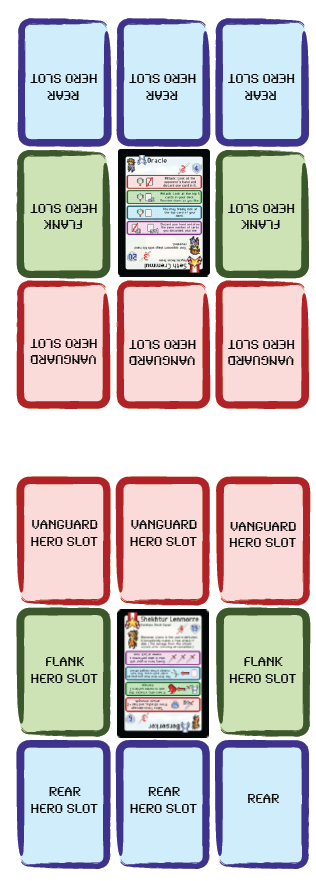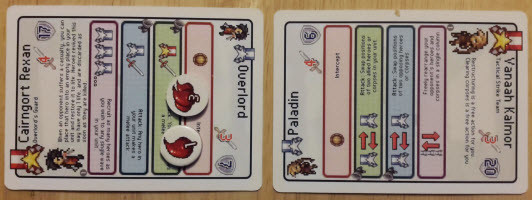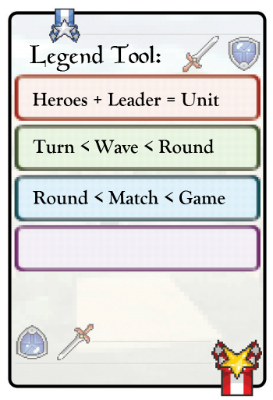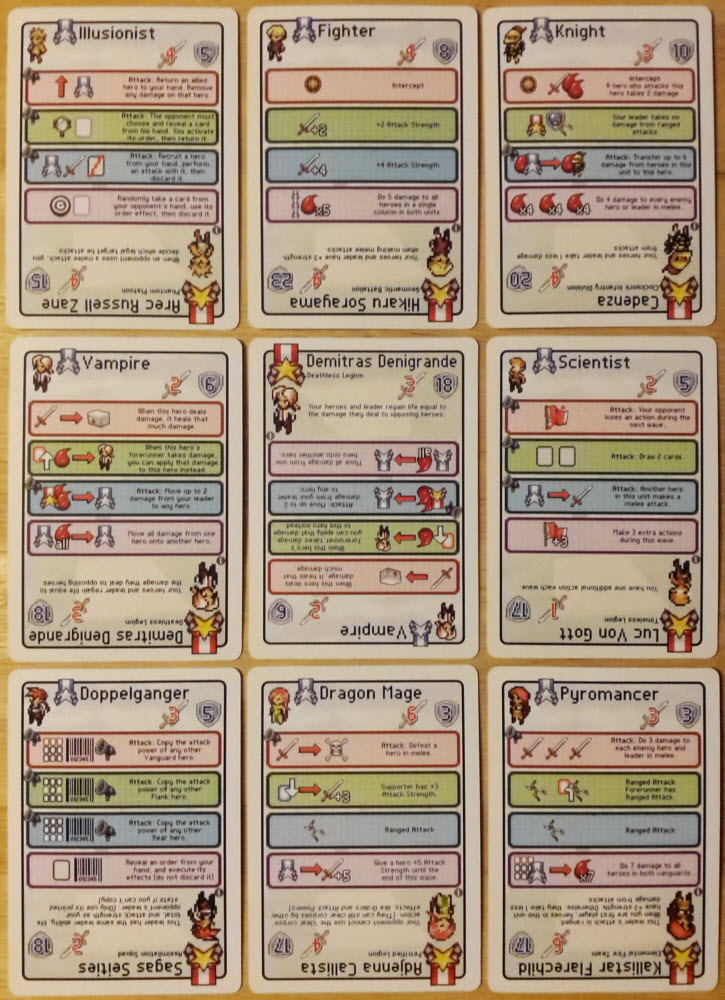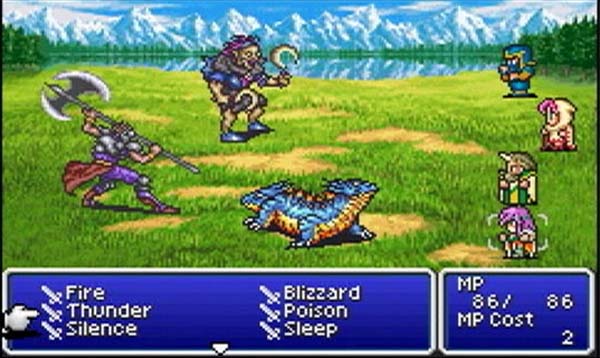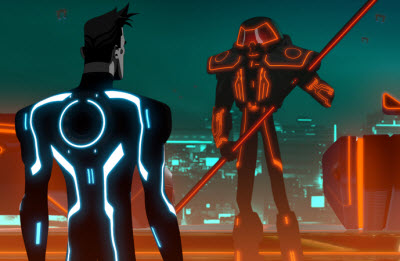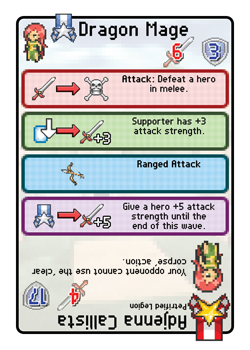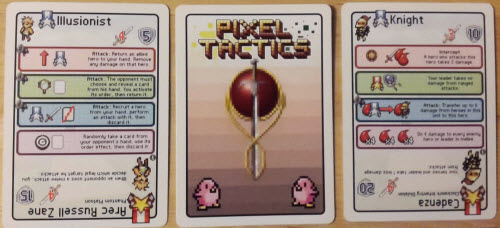Note: This review pertains to the Second Edition of Pixel Tactics
You wait with anticipation as you stare down your foe across the way. He seems imposing and strong, but you know you can take him. All you need is for it to be your turn. It’ll come soon enough. You’ll get the green light for the Vanguard to make their move, and when you do, your enemy will fall before your blade.
In the meantime, you’ll sort of bounce here in place. You’ll strike; oh yes. Just need the green light.
Suddenly arcing towards you, shadows momentarily block the light. Arrows were loosed from behind enemy lines. You cringe as they sail just to your left and pluck your ally with so many holes that he’ll likely die on his feet at any moment. It’s a terrible event. Someone should try to help him. You wish you could.
Instead, you’ll sort of bounce here in place. Just need the green light…
The Premise
The world of Indines is one of continual conflict and strife. Ever are various factions at odds with one another, and things don’t appear to be subsiding anytime soon. Players manage these stratgic fights, taking on the roles of different skirmish leaders as they aim to rally their units towards victory.
The Rules
Pixel Tactics is a two-player card game of tactical combat. Playable right out of the box, it is comprised of two identical 25-card decks and is played in a series of “best-of” bouts (either three or five), called matches.
To begin each match, players draw five cards and selects one of them to be their Leader. Cards in Pixel Tactics have two orientations. One side depicts a Leader with a full name; the other side is the less-epic Hero. Leaders are revealed simultaneously, and unless they are identical, they are put in front of their respective players. Leaders make up the center of a player’s nine-slot tableau, called a unit.
The starting player for the first match is determined randomly, whereas in all subsequent matches it is the previous winner. A match consists of a series of rounds, which are broken down into three Waves: Vanguard, Flank, and Rear, corresponding to the first, second, and third rows of a player’s unit, respectively. During each Wave, each player takes a turn. After both players take their Rear Wave turns, the first player marker swaps, and a new round begins with the Vanguard Wave.
On a player’s turn, they may take two actions. These include:
- Draw a Card
- Recruit a Hero: Put a hero into an empty slot of the current Wave. Each hero has distinct battlefield abilities that change depending on which Wave they are in.
- Play an Order: Discard a hero card to activate the card’s Order ability.
- Attack: One character in the current Wave makes an attack. There are three kinds of attacks – melee, ranged, and special. For melee and ranged attacks, the character does damage equal to its attack power. Melee attacks hit the first enemy in their column but cannot be performed if an allied character is in front of them. Ranged attacks may hit any character in the opposing unit, but heroes with the ‘Intercept’ ability prevent units behind them in that column from being targeted.Alternatively, an attack power may be used. Attack powers do a special combat abilities instead of administering damage.
- Clear a Corpse: Removes a fallen hero from a player’s unit. The bodies of dead heroes stay on the board and must be removed before placing a new hero there.
- Restructure: Move a hero to any unoccupied slot in the unit.
Players may take actions twice and in any order, with two exceptions. First, a character can only Recruit, Attack, or Restructure once per Wave. Second, Attacks and Orders can’t be played during the first round of a match.
Rounds continue until one player’s Leader is killed. The winning player removes both Leader cards from the game as a “trophy”. Then, players shuffle their decks and a new match begins. Each player draws their starting cards, plus an additional card for each trophy their opponent has.
The first player to win the agreed-upon number of bouts wins, thereby demonstrating that they are superior strategist and battlefield commander. The other player may wish to find safe harbor to group, as the Pixel Wars are far from over, and they have a lot of dead heroes at their feet.
The Rules Of Tzu
The Art of War by Sun Tzu is one of the most famous texts ever written. If you’ve never read it, chances are you’ve heard about it in some fashion, and even if you have read this 2,500 year old tome, it’s even far less likely that you did so in Chinese on its original bamboo slips. Instead, you likely picked it up in your native language (which for English speakers still surprisingly took until the early 1900s), as rules to anything are best conveyed and understood in the least difficult manner possible.
The same lesson applies to Pixel Tactics. For a tactical strategy game, Pixel Tactics has a pretty concise set of rules, and it attempts to make learning the game as simple as possible. The back side of rules pamphlet, for example, expands out into a fully detailed space that can be used as a visual aid for those learning the game.
However, this double-sided pamphlet is also a double-sided sword. For uninitiated players, actually taking advantage of the back side of the rules makes it incredibly inconvenient to reference the full rules text on the front. For players with slightly more experience, the map-like folding rules pamphlet isn’t all that handy if you’re trying to use it for quick referencing.
The larger issue with the rules booklet though isn’t with its physical quality but its content. Or, in this case, lack of content. The rules to second edition of the game accidentally omit a couple important rules of the game, including the round one ceasefire and what to do if you reveal identical Leaders. These are important but simple rules that drastically alter the strategy of the game.
While a corrected version is available online, that’s small comfort to new players who wouldn’t know to check. Nor should they be expected to be. Pixel Tactics does not have a lot of lengthy rules, so not having all of them available from the onset is a quality issue.
It should also be noted that the play time on the box is also slightly off. While Pixel Tactics is listed as a 30 minute game, it’s actually closer to the 30-60 minute mark, although the exact time will depend on how many matches the game goes and those playing the game. Nevertheless, time won’t be the deciding factor for Socializers to pass on this game. Instead, the one vs one environment and central focus of outmaneuvering your opponent isn’t the type of game they’re generally after.
An Unplugged Approach
When it comes to the look of the game, Pixel Tactics does a masterful job of using pixelated art. All of the characters and icons are decently detailed in this illustration style and are all done in a way that properly tributes classic JRPG console games such as Lunar, Chrono Trigger, and the Final Fantasy series. The artwork serves as a nice accentuating feature to the game’s turn-based and unit-centered fighting style.
That doesn’t mean it’s going to draw you into feeling like you’re actually inside the world of Indines, though. In fact, aside from Leader names, Pixel Tactics could effectively be set anywhere. Rather, at best you get the impression you’re playing one of those classic console games. You know, just without the buttons and menus. Ultimately, the game’s flavor is not much more than a surface-coating. Pixel Tactics is more function than form, and there is little for Immersionists to latch on to here.
Embracing The Grid
Tangential issues aside, the overall gameplay of Pixel Tactics is largely intuitive and straightforward. Every character in the game has varying abilities depending on which row they are placed (denoted as Red for Vanguard, Green for Flank, and Blue for Rear) or if their Order actions (Purple) are used. Which hero attribute will be best for you is very dependent on your current situation and can often shift quickly.
But you also have to contend with a maximum of two actions each turn, and some of those will have to be spent on more than summoning new heroes and attacking. Card draw is vital to keeping your options open, as is making sure you don’t back yourself into a corner by not spending time to clean the corpses of your fallen comrades yet and therefore being unable to bring in new characters to protect those vital ones still alive. Part strategy and part upkeep, these extra areas to manage keep the game from simply being a test of who can fill up the board fastest.
All this allows for an incredible amount of variety and strategic depth in a game where each player has – at most – just 25 cards to work with. Every game will play out differently than the last, and many matches feel like a fantasy-laden version of Chess. For Tacticians, this is the ideal sort of game: figuring out which heroes pair off each other well, knowing when to sacrifice one hero to save others, and when to save cards for their Order ability or for future deployment. Thinking ahead in Pixel Tactics is not only suggested, it’s essential to victory.
As a result, don’t expect a game of this nature to appeal to Daredevils and Architects, as it doesn’t invite the styles of gameplay they enjoy. There’s no room for chaos in the ranks, and playing defensive is a short-term option. This is a game about hard choices, and everything but your Leader’s final hit points are expendable to secure the win.
Strikers on the other hand will enjoy Pixel Tactics, since aside from which cards you draw from your deck, the game relies more on skill than randomness. Granted, like many card games, which cards you draw can quickly alter your chances of success, and at times it even can be the deciding factor here. Still, the vast majority of the game is a venerable battle of wits between two competitors. Kill their Leader and you win. How you do that with the tools available is up to you.
The Takeaway
Pixel Tactics is the definition of a game that sets out with a specific intent and then promptly delivers on it. Each game in Pixel Tactics is a series of spirited skirmish battles where players test their strategic acumen against one another. Players must balance tactical unit deployment and having powerful answers to their opponent’s forces, as there are only a finite number of cards in their deck to go around. The game certainly rewards careful maneuvering and calculated decisions, although both aspects can be trumped by luck of the draw. However, the one major failing of Pixel Tactics isn’t with luck, but poor packaging: the game’s flimsy box and cumbersome folding rulebook detract from an otherwise impressively engaging game with a respectable amount of depth. Nevertheless, for those seeking a worthwhile 16-bit duel without the controllers, or those simply seeking a great two-player strategy game, then be sure to plug in to Pixel Tactics.
Pixel Tactics is a product of Level 99 Games.
Cardboard Republic Snapshot Scoring (Based on scale of 5):
Artwork: 3.5
Rules Clarity: 3
Replay Value: 4
Physical Quality: 3.5
Overall Score: 3.5
Photo Credits: Game layout and Dragon Mage by Level 99 Games; Final Fantasy 5 by Wikia; Tron Uprising by Disney TV Animation.

